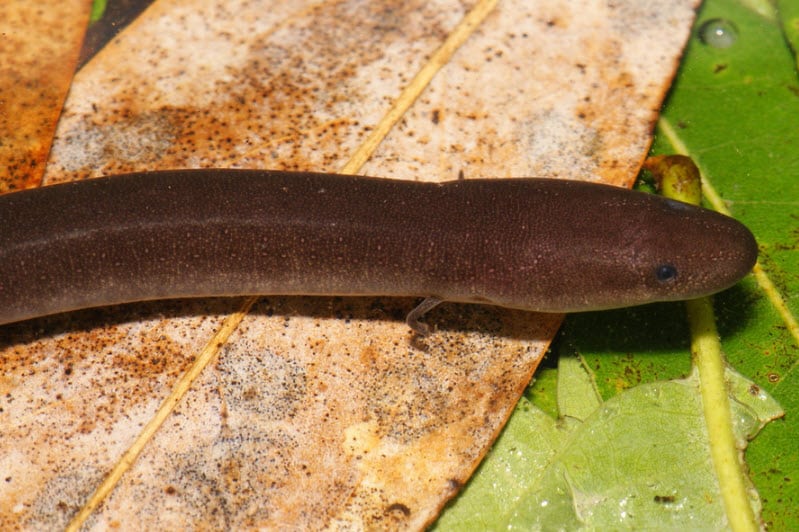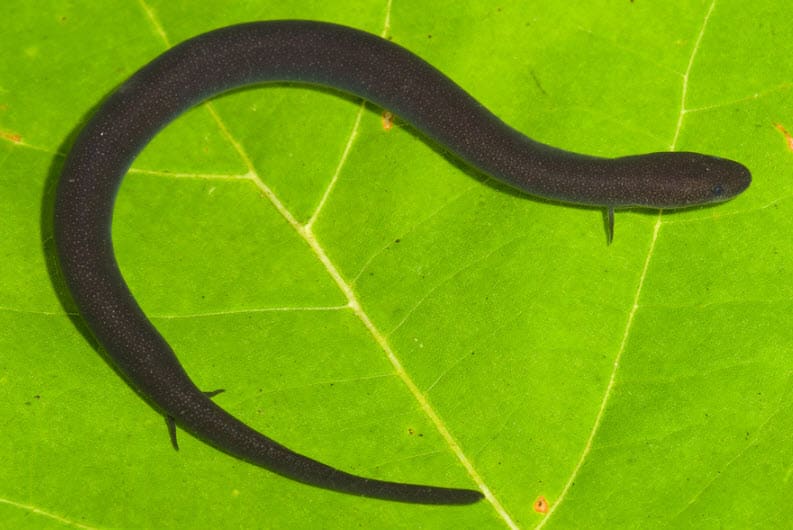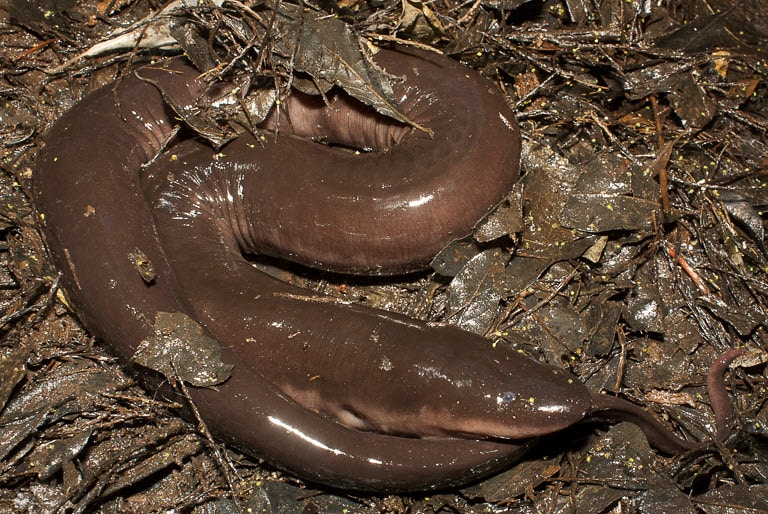
Photograph of Amphiuma means, the two-toed amphiuma, courtesy of Kevin Stohlgren and Amphibians and Reptiles of North Carolina
Well, Halloween is finally upon us. A holiday favorite of mine, tis the season for pumpkin carving, for plastic skeletons arranged in tableaus, and for viewing classic seasonal films. One such film that I enjoy all year round is from 1954, The Creature from the Black Lagoon. One of the original “monster movies” from the midcentury, the story focuses on a group of scientists on an expedition to capture and study a strange creature living in an Amazonian lagoon. What could possibly go wrong? In that spirit, this month’s weird and wonderful focus is on one of North Carolina’s own mysterious, aquatic creatures: the two-toed amphiuma.
Chances are good that you have never heard of this animal, let alone seen it. It is highly elusive, being primarily nocturnal in nature and occupying shallow ponds, ditches, and abandoned rice fields in the Coastal Plain and adjacent Piedmont regions of the Carolinas. As for what it actually is, well, that is where the weirdness begins. It is an eel-like salamander that has the honor of being North America’s longest amphibian, ranging in size between 18 inches to almost 4 feet in length. This species gets its name from the fact that it has two tiny pairs of legs, each with two tiny toes. Its underside is typically a light gray color, with the top portion being a uniform black, dark gray, or dark brown.

Photograph of Amphiuma means, the two-toed amphiuma, courtesy of Kevin Stohlgren and Amphibians and Reptiles of North Carolina
Primarily aquatic, it is hypothesized that two-toed amphiumas may travel between wetlands during heavy rains, crossing over land to get from place to place. Seeing a darkly colored, slimy, eel-like creature emerge from a swamp at night in the rain is probably a scary sight, if you don’t know that what you are watching is just your friendly neighborhood amphibian roaming about the landscape. Well, friendly is probably not an apt description; amphiumas are carnivorous and have the sharp teeth necessary for that dietary lifestyle. They may bite defensively if they feel threatened, and the chompers on large adults can cause some serious wounds. So, if you are fortunate enough to see one of these weird and wonderful animals in the wild, it is best to enjoy the view, but do not touch the amphiuma.

Photograph of Amphiuma means, the two-toed amphiuma, courtesy of Todd Pierson and Amphibians and Reptiles of North Carolina
Herpetologists (scientists who study reptiles and amphibians) do not know a whole lot about two-toed amphiumas. What is known is that females deposit long strings of eggs, ranging anywhere from 10 eggs to over 300, underneath logs, boards, and other objects in moist or wet areas during the winter months. These strings have been described as “rosary-like” and have been found in some unusual places, including alligator nests. Once a female has laid her eggs, she remains with them until they hatch into aquatic larvae around five months later. These tiny larvae are, on average, around 2.2 inches long, and once they transform into the adult stage, they are around 2.75 inches long. The next time you take a stroll through the hardwood forests and pine savannas of North Carolina’s coastal plains, pay attention to any wetlands you see. They just might house our state’s very own creature from the black lagoon.
